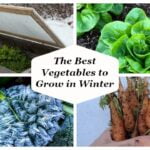Essential Guide for Organic Gardeners: The Living Soil Manual

Organic gardening has become an increasingly popular practice among those who wish to grow their own food in a sustainable and environmentally friendly manner. One of the most prominent techniques within this approach is no-till gardening, which is based on principles that avoid disturbing the soil and promote soil life and plant health. In this article, we will explore the living soil manual and all the aspects necessary to become a successful organic gardener.
- Basic principles of no-till gardening
- Photosynthesis and its importance
- Use of compost and mulch
- Garden path management
- Incorporation of biology and fertility in the soil
- Hedge cultivation and its benefits
- Production methods in organic gardening
- Suitable tools and practices for soil health
- How to maximize soil health
- Meeting the needs of the soil
- Being a professional farmer and maintaining a source of income
- Conclusion
Basic principles of no-till gardening
No-till gardening is based on three fundamental principles: avoid disturbing the soil, keep it covered and keep it planted.
- Avoid disturbing the soil
One of the basic premises of no-till gardening is not to disturb the soil through traditional digging. Instead, it focuses on keeping the soil structure intact and preserving beneficial soil-dwelling life and microorganisms. By avoiding soil disturbance, erosion is reduced, soil degradation is prevented and soil health is promoted.
- Keeping the floor covered
Another key principle of no-till gardening is to keep the soil permanently covered. This is accomplished by using organic materials such as straw, leaves, cardboard, cut grasses and mulch. Keeping the soil covered prevents moisture loss, protects it from temperature extremes and provides a favorable environment for microbial life and beneficial insects.
- Keeping the soil planted
The last principle of no-till gardening is to keep the soil planted at all times. This is accomplished by using cover crops, perennials, and proper crop rotations. Keeping the soil planted promotes nutrient uptake and retention, improves soil structure, and provides habitat for beneficial organisms.
Photosynthesis and its importance
Photosynthesis is a vital process in the life cycle of plants and plays a crucial role in soil health. During photosynthesis, plants convert solar energy into sugars that they use as a food source. These sugars are released into the soil through the roots, which feeds beneficial microorganisms and promotes their activity in the soil.
In addition to providing food for soil microorganisms, photosynthesis also helps capture carbon from the atmosphere and store it in the soil in the form of organic matter. This helps mitigate climate change by reducing the concentration of carbon dioxide in the atmosphere.
Use of compost and mulch
One of the cornerstones of no-till gardening is the use of compost and mulch to improve soil fertility and health.
- Compost
Compost is a mixture of decomposing organic matter that can be used as a soil amendment. Adding compost to the soil improves soil structure, increases nutrient and water retention, and promotes the activity of beneficial microorganisms. Compost also helps control weeds and reduce the need for chemical fertilizers.
- Mulch
Mulch is a layer of organic material placed on top of the soil to keep it covered and protected. Mulch can be straw, leaves, cut grasses, or other available organic materials. By keeping the soil covered with mulch, water evaporation is reduced, erosion is prevented, and decomposition of organic matter is encouraged, which improves soil fertility in the long term.
Garden path management
When practicing no-dig gardening, it is important to consider the management of garden paths. Paths play a crucial role in mobility and accessibility within the garden, but they can also affect soil health if not managed properly.
To minimize soil disturbance and maintain soil health, it is recommended that organic materials such as straw, wood chips or stones be used to create paths. These materials prevent erosion and allow the soil to continue to breathe and maintain its structure.
Incorporation of biology and fertility in the soil
Soil health is highly dependent on the biology and fertility present in the soil. To promote an active and healthy soil life, it is necessary to incorporate soil biology and fertility.
- Soil biology
Soil biology refers to the set of beneficial microorganisms, bacteria and fungi that inhabit the soil. These organisms play a key role in decomposing organic matter, fixing nitrogen and improving soil structure. To promote soil biology, it is important to avoid the use of pesticides and harsh chemicals that could harm or eliminate beneficial organisms.
- Soil fertility
Soil fertility refers to the soil's ability to provide the nutrients necessary for plant growth. To improve soil fertility, it is important to use organic amendments such as compost, manure and other natural fertilizers. These amendments provide essential nutrients and promote microbial activity in the soil.
Hedge cultivation and its benefits
Cover cropping is an essential practice in no-till gardening. It consists of planting crops that are mainly used to cover the soil and improve its structure and fertility.
Cover cropping has several benefits, among them:
- Protect soil from erosion and nutrient leaching.
- Improve soil structure by adding organic matter.
- Fix atmospheric nitrogen in the soil, reducing the need for chemical fertilizers.
- Attract pollinators and other beneficial insects.
- Reduce the proliferation of weeds.
By incorporating the cover crop into the landscape plan, a virtuous cycle is created in which cover crops improve the soil and prepare the soil for the main crops.
 Enhance Your Gardening with the Terrateck 5-Tine Cultivator
Enhance Your Gardening with the Terrateck 5-Tine CultivatorProduction methods in organic gardening
There are several production methods in organic gardening that can be adapted to the needs and conditions of the gardener. Some of the most popular methods include:
- Raised bed gardening: consists of the creation of raised and delimited beds that facilitate access, maintenance and cultivation of plants.
- Container gardening: ideal for those who have limited space or live in apartments. Containers can be placed on balconies or patios and allow a wide variety of plants to be grown.
- Vertical gardens: a creative option to use available vertical space and grow plants on walls or in structures designed specifically for this purpose.
- Terrace gardens: a way to take advantage of the unevenness of the terrain to create terraces where plants can be grown. This helps to control erosion and make the most of the available space.
Regardless of the production method chosen, it is essential to follow the basic principles of no-till gardening and use ecological practices that promote soil life and environmental conservation.
Suitable tools and practices for soil health
Using the right tools and practices is critical to maintaining soil health and maximizing results in no-till organic gardening.
- Tools
Some recommended tools include:
- Garden fork: useful for loosening the soil without turning it over and preserving its structure.
- Hand hoe: ideal for weeding and moving small amounts of soil without disturbing the soil.
- Rake: useful for leveling the soil and removing plant residues without disturbing the soil.
- Pruning shears: necessary to keep plants pruned and healthy.
- Internships
Some best practices include:
- Crop rotation: to avoid nutrient depletion and disease accumulation in the soil.
- Crop association: to take advantage of synergies between different plants and maximize space utilization.
- Manual weed control or mulching: to keep the soil free of weeds without disturbing it with tillage.
- Proper plant maintenance: includes regular watering, proper fertilization and natural pest and disease control.
How to maximize soil health
To maximize soil health, it is important to follow the basic principles of no-till gardening and adopt practices that promote soil life and soil fertility.
Some additional recommendations include:
- Use organic fertilizers such as compost, manure and leaf compost to provide nutrients naturally and maintain soil fertility.
- Promote plant diversity: by growing a wide variety of species, the diversity of microorganisms in the soil is promoted and the garden ecosystem is balanced.
- Avoid the use of chemicals: chemical pesticides and fertilizers can damage soil microbial life and negatively affect soil health.
- Use water conservation techniques such as drip irrigation, rainwater harvesting and mulching to reduce evaporation and the need for frequent watering.
By following these recommendations and conducting proper soil management, you can maximize soil health and achieve better results in organic gardening.
Meeting the needs of the soil
Each soil type has different needs and characteristics that must be taken into account in organic gardening. By knowing these needs and adapting practices to each soil type, a healthy environment for plants and soil life can be ensured.
Some important considerations include:
- Soil pH: Each type of plant has a preferred pH range. It is important to test soil pH and adjust the pH if necessary to meet the specific needs of the plants.
- Soil texture: Clay soils retain more water and nutrients, but can be heavy and compacted. Sandy soils drain quickly, but can be poor in nutrients. It is important to adapt irrigation and fertilization practices according to soil texture.
- Nutrient levels: perform soil tests to determine available nutrient levels and adjust fertilization according to plant needs.
- Water holding capacity: factors such as soil structure, the presence of organic matter and the presence of vegetative cover influence the water holding capacity of the soil. It is important to provide the right amount of water to plants according to soil characteristics.
Being a professional farmer and maintaining a source of income
Organic no-till gardening can not only be a personally and environmentally rewarding activity, but it can also become a sustainable source of income.
To become a professional farmer and maintain a source of income with organic gardening, it is important to consider aspects such as:
- Organic market: investigate whether there is a local market for organic products and determine demand and prices.
- Proper planning: develop a crop plan and seasonal planning to ensure consistent product availability and meet market demand.
- Crop diversification: grow a variety of crops to appeal to different consumers and reduce the risk of relying on a single product.
- Local connections: establish relationships with other organic farmers, natural food stores and local restaurants to expand distribution channels and increase product visibility.
With the right approach, technical knowledge and proper planning, it is possible to enjoy a life as a professional organic farmer and maintain a sustainable and environmentally friendly source of income.
Conclusion
Organic no-till gardening is a sustainable and environmentally friendly way to grow food. By following the basic principles of avoiding disturbing the soil, keeping it covered and planted, and using proper practices and tools, it is possible to maximize soil health and achieve successful gardening results. In addition, by meeting the specific needs of the soil and tailoring practices to each soil type, a healthy environment for plants and soil life can be ensured. By becoming a professional farmer and maintaining a source of income through organic gardening, you contribute to environmental conservation and promote a more sustainable lifestyle. So, let's get to work and start growing our own no-till organic garden!
 Overwinter Crops: 5 Crops You Can Still Plant This Year
Overwinter Crops: 5 Crops You Can Still Plant This Year
Leave a Reply